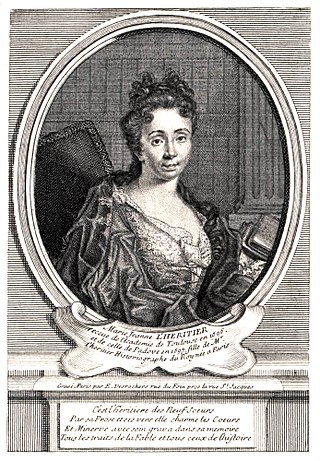Related Research Articles

Diamonds and Toads or Toads and Diamonds is a French fairy tale by Charles Perrault, and titled by him "Les Fées" or "The Fairies". Andrew Lang included it in The Blue Fairy Book. It was illustrated by Laura Valentine in Aunt Louisa's nursery favourite.

The Three Heads in the Well is a fairy tale collected by Joseph Jacobs in English Fairy Tales.

The Iron Stove is a fairy tale collected by the Brothers Grimm, as tale number 127. It is Aarne–Thompson type 425A, "The Animal (Monster) as Bridegroom". Dorothea Viehmann prepared the story for the Grimms' collection.

Father Frost is a Russian fairy tale collected by Alexander Afanasyev in Narodnye russkie skazki (1855–63). Andrew Lang included it, as "The Story of King Frost", in The Yellow Fairy Book (1894).

Shita-kiri Suzume, translated literally into "Tongue-Cut Sparrow", is a traditional Japanese fable telling of a kind old man, his avaricious wife and an injured sparrow. The story explores the effects of greed, friendship and jealousy on the characters.

"The Three Little Men in the Wood" or "The Three Little Gnomes in the Forest" is a German fairy tale collected in 1812 by the Brothers Grimm in Grimm's Fairy Tales. Andrew Lang included it in The Red Fairy Book (1890) as "The Three Dwarfs," and a version of the tale appears in A Book of Dwarfs (1964) by Ruth Manning-Sanders.
"The Silent Princess" is a Turkish fairy tale, structured as a frame story with three inserted tales: "The Magic Pomegranate" ; "The Carpenter, the Tailor, and the Clergyman"; "Three Suitors at the Graveyard". Andrew Lang included it in The Olive Fairy Book.
The Two Caskets is a Scandinavian fairy tale included by Benjamin Thorpe in his Yule-Tide Stories: A Collection of Scandinavian and North German Popular Tales and Traditions. Andrew Lang included it in The Orange Fairy Book.
"The Pig King" or "King Pig" is an Italian literary fairy tale written by Giovanni Francesco Straparola in his The Facetious Nights of Straparola. Madame d'Aulnoy wrote a French, also literary, variant, titled Prince Marcassin.
The Enchanted Wreath is a Scandinavian fairy tale, collected in Benjamin Thorpe in his Yule-Tide Stories: A Collection of Scandinavian and North German Popular Tales and Traditions. Andrew Lang adapted a variant of it for The Orange Fairy Book.

The Old Witch is an English fairy tale published by Joseph Jacobs in his 1894 book, More English Fairy Tales. It is also included within A Book of Witches by Ruth Manning-Sanders and A Book of British Fairy Tales by Alan Garner. Neil Watkins has researched the story of ‘The Old Witch’. In "The Watkins Book of English Folktales" PP.55-60 Watkins records that the story was told by a nine year old girl called Nora to Ellen Chase in Deptford in 1892. Ellen Chase gave her copy of the story to Mrs Gomme, who then sent it to Joseph Jacobs. Watkins notes that “It is at once clear that the Gomme/Jacobs text is a radical revision of the original, rather than a slight brushing-up for publication.” Chase’s original notes were published in FLS News as ‘The Witch and her Servant’ and is re-produced in Watkins pp.58-59.
Biancabella and the Snake is an Italian literary fairy tale written by Giovanni Francesco Straparola in The Facetious Nights of Straparola.
Penta of the Chopped-off Hands or The Girl With the Maimed Hands is an Italian literary fairy tale written by Giambattista Basile in his 1634 work, the Pentamerone.
Sapia Liccarda is an Italian literary fairy tale written by Giambattista Basile in his 1634 work, the Pentamerone. It is not known whether he had a specific source, either literary or oral, for this tale.
The Dove is an Italian literary fairy tale written by Giambattista Basile in his 1634 work, the Pentamerone.
Maestro Lattantio and His Apprentice Dionigi is an Italian literary fairy tale written by Giovanni Francesco Straparola in The Facetious Nights of Straparola.

Marie-Jeanne L'Héritier de Villandon was an aristocratic French writer and salonnière of the late 17th century, and a niece of Charles Perrault.
Costanza / Costanzo is an Italian literary fairy tale written by Giovanni Francesco Straparola in The Facetious Nights of Straparola.
The Three Crowns is an Italian literary fairy tale written by Giambattista Basile in his 1634 work, the Pentamerone.
Aurore and Aimée is a French literary fairy tale written by Jeanne-Marie Le Prince de Beaumont. Like her better known tale Beauty and the Beast, it is among the first fairy tales deliberately written for children.
References
- ↑ Jack Zipes, The Great Fairy Tale Tradition: From Straparola and Basile to the Brothers Grimm, p. 544, ISBN 0-393-97636-X
- 1 2 3 Jack Zipes, The Great Fairy Tale Tradition: From Straparola and Basile to the Brothers Grimm, p. 543, ISBN 0-393-97636-X
- ↑ Heiner, Heidi Anne. "Tales Similar to Diamonds and Toads". Sur la Lune. Archived from the original on 22 Feb 2020.